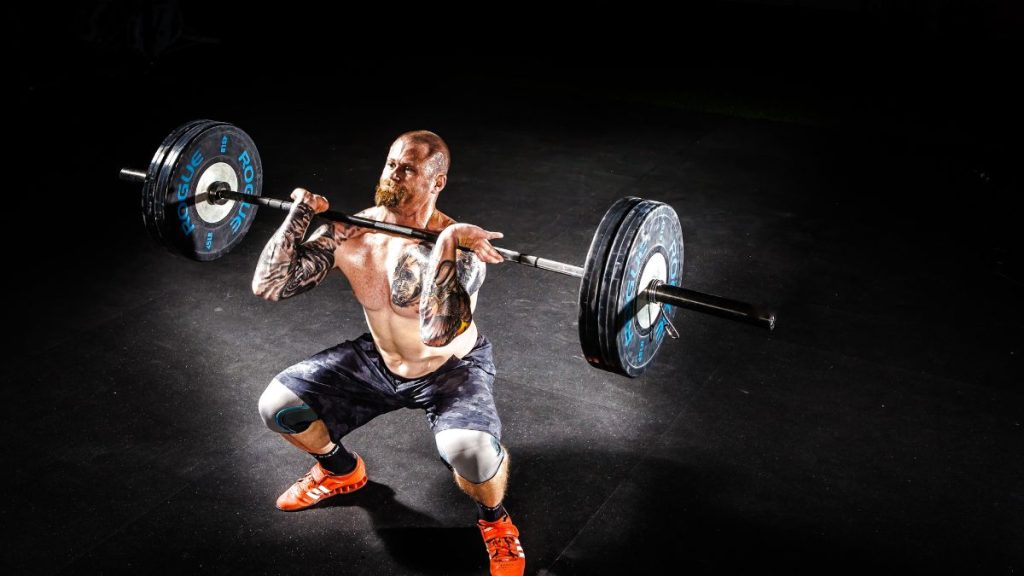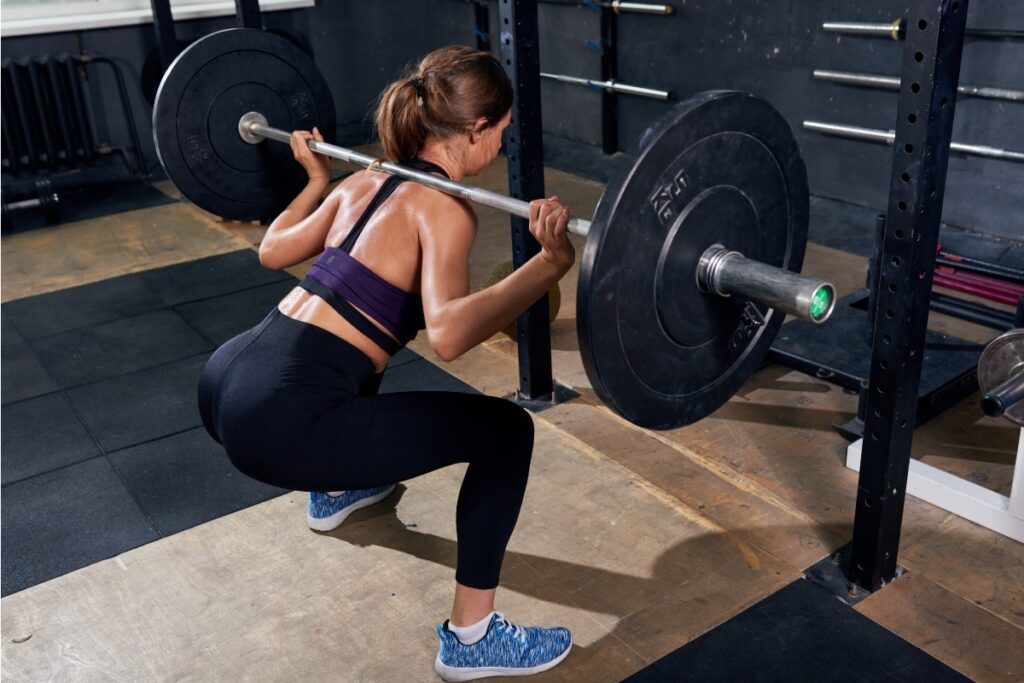Building powerful legs requires the correct exercises to achieve maximum muscle growth, strength, and balance. The leg press and squat are staple movements that target the lower body but have key differences that may make one better suited to your goals. In this article, we’ll explore the pros and cons of each exercise, their benefits, and how to decide which is best for you.
What’s the Difference Between the Leg Press and Squat?
Both exercises primarily target the quadriceps, hamstrings, glutes, and calves, but they vary in how they work these muscles and the overall experience they provide.
- Leg Press: This is a machine-based exercise where you push a weighted platform away from your body. It primarily isolates the lower body and provides stability, allowing you to focus on pushing the weight with your legs.
- Squat: A free-weight exercise performed with a barbell on your shoulders (or as a bodyweight move), squats require balancing and involve the entire body. They engage the core, lower back, and stabilizer muscles, making them a compound movement for overall strength and functional fitness.
Which Muscles Do Leg Press and Squats Target?
Both exercises target the same lower body muscles but in different ways:
- Leg Press: Focuses mainly on the quads, with a limited core and lower back engagement. Depending on your foot placement on the platform, you can emphasize different parts of the legs, such as the quads (feet low on the platform) or the glutes and hamstrings (feet higher).
- Squats: Target the entire lower body, emphasizing core stability and balance. Squats engage the quads, hamstrings, and glutes and activate the core, lower back, and calves, providing a full-body workout.
What Are the Benefits of the Leg Press?
The leg press offers several unique advantages, especially for those who need a stable environment for lower body training.
- Isolated Muscle Activation: Since the leg press is a machine-based exercise, it isolates the legs, allowing you to push heavier weights without relying on your core or stabilizer muscles.
- Reduced Spinal Load: Unlike squats, the leg press removes direct load from your spine. This is ideal for those with back issues who still want to build muscular legs.
- Easy to Control Range of Motion: Leg presses allow you to adjust the range of motion to target specific muscles. For example, placing feet higher on the platform targets the hamstrings and glutes, while a lower foot placement emphasizes the quads.
- Lower Injury Risk for Beginners: The machine stabilizes the body, reducing the risk of improper form and injury, making it a good choice for beginners.
Ideal for: People recovering from injuries, beginners building leg strength, and those with back limitations.
What Are the Benefits of the Squat?
The squat is often hailed as the “king of exercises” due to its full-body engagement and functional movement pattern.
- Functional Strength and Balance: Squats require coordination, balance, and core engagement, translating well into real-world activities and sports performance.
- Core Activation: Squats demand a solid core to stabilize the weight, which improves core strength and stability. This added core engagement can help protect the spine during other lifts and daily movements.
- Full Body Engagement: By engaging multiple muscle groups, squats can promote greater muscle growth and improve hormone release, such as testosterone and growth hormone, aiding overall muscle building.
- Versatility and Variations: Squats come with numerous variations—such as front squats, goblet squats, and Bulgarian split squats—that target different lower body areas and can add variety to a workout.
Ideal for: Athletes, advanced lifters, and those seeking full-body strength and functional fitness.
Leg Press vs. Squat: Which One Builds More Muscle?
When it comes to muscle building, both exercises are practical, but they work differently. Here’s how each one can contribute to muscle growth:
- Leg Press: The leg press allows for heavy weights and focuses on muscle isolation, making it ideal for hypertrophy (muscle growth) without taxing the core. This can be useful for bodybuilders or those who want to focus on quad development.
- Squats: Squats are better for overall muscle growth because they activate multiple muscle groups simultaneously. They recruit the glutes, hamstrings, and stabilizer muscles, providing a more holistic workout.
Verdict: The leg press may be preferable if the goal is isolated muscle growth in the legs. For overall muscle mass, squats are more effective due to their compound nature and muscle recruitment.
Which Exercise Burns More Calories?
Due to their full-body nature, squats generally burn more calories than leg presses. The core, back, and stabilizer muscles work alongside the lower body, increasing energy expenditure. The more muscle groups involved, the more calories you burn, which makes squats a better choice for those looking to lose weight or improve conditioning.
Leg Press vs. Squat: Which is Safer?
Safety often depends on technique and individual physical limitations. Here’s a comparison:
- Leg Press: Generally safer for beginners and people with back or knee issues. Since the machine controls the movement, losing balance or putting undue stress on the lower back is less risky.
- Squats: Require proper form and stability. Incorrect form, such as leaning too far forward or not maintaining a straight back, can increase injury risk. For safety, starting with bodyweight or goblet squats is recommended before progressing to barbell squats.
Verdict: The leg press may be safer for beginners or those with physical limitations. Squats require a good foundation of technique and core strength.
Can You Do Both for Maximum Benefits?
Absolutely! Combining both exercises can provide balanced leg development and strength. Here’s how:
- Use Leg Press for Volume: Perform leg presses at higher rep ranges to isolate the quads and enhance endurance.
- Use Squats for Strength and Power: Include squats early in your workout to focus on strength, stability, and full-body engagement.
Sample Workout Incorporating Both Exercises
Here’s a balanced lower body workout that includes both the leg press and squat:
- Squats: 4 sets of 6–8 reps (focus on strength and form)
- Leg Press: 3 sets of 10–12 reps (isolate quads and emphasize hypertrophy)
- Romanian Deadlift: 3 sets of 8–10 reps (target hamstrings and glutes)
- Calf Raises: 3 sets of 15 reps (for calf development)
Final Takeaway: Which One Should You Do?
Choosing between the leg press and squat depends on your goals, fitness level, and physical condition:
- Choose Leg Press if you’re new to weightlifting, have back issues, or want to focus on isolated muscle growth with less core involvement.
- Choose Squats for functional strength, core stability, and a lower-body workout that translates to daily activities and sports performance.
For optimal results, consider incorporating both into your routine. Each exercise complements the other, allowing for balanced muscle development and improved strength. Understanding your body’s needs and fitness goals allows you to maximize each exercise and achieve impressive lower-body results.




